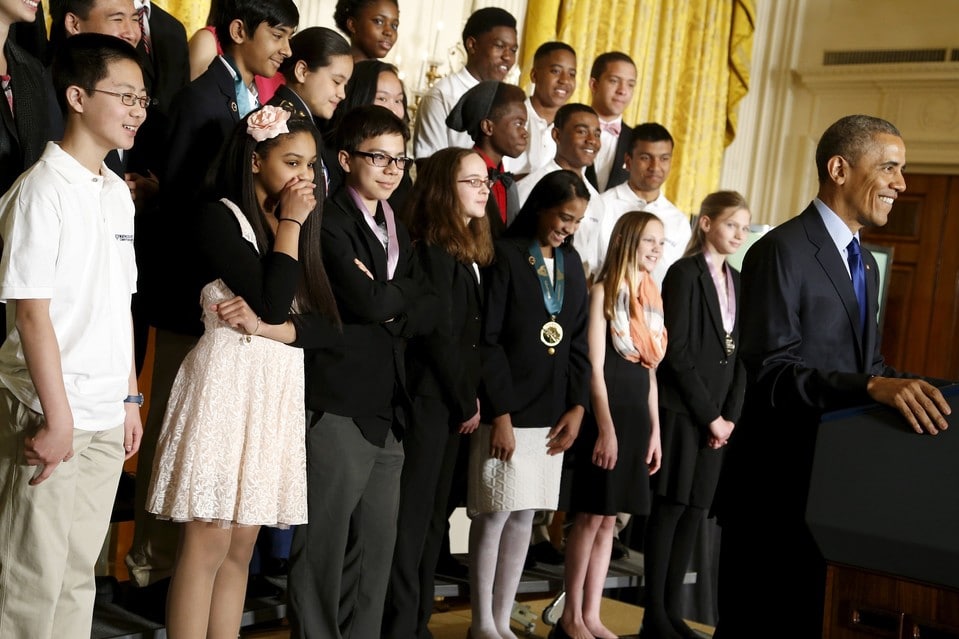President Barack Obama has repeatedly voiced his interest in helping diversify careers in science, technology, engineering and math (STEM), and the 2015 White House Science Fair marked the president’s latest effort to follow through on his word.
This year marked the fifth installment of the White House Science Fair, but the gathering had a particular focus — diversity.
An incredibly diverse group of students were gathered together at the White House to present their own incredible achievements in STEM.
Students from across the nation, and even as far as the U.S. Virgin Islands, demonstrated their amazing potential to be tomorrow’s leaders in Silicon Valley.
With STEM careers being in high demand and officials fearing a possible deficit of people to fill these jobs in a few years, it’s important to get more youths into such fields.
What’s more important, however, is to make sure that marginalized communities are not continuing to be overlooked as the nation prepares to welcome the new wave of engineers, programmers, developers and more.
Silicon Valley has been heavily criticized for its stunning lack of diversity and it’s a trend that has been true throughout all areas of STEM.
The president is hoping to help change that by committing $240 million in private-sector commitments to help diversity STEM fields.
“We don’t want to just increase the number of American students in STEM,” the president said at the White House Science Fair. “We want to make sure everybody is involved. We want to increase the diversity of STEM programs as well. That means reaching out to boys and girls, men and women, of all races and all backgrounds. Science is for all of us. And we want our classrooms and labs and workplaces and media to reflect that.”
Progress is still being made in hopes to make that vision a reality, but at least that vision was realized at the science fair.
The diverse teams helped obliterate all misconceptions that Black people aren’t in STEM fields because they aren’t talented or interested enough.
“Everybody needs an opportunity to go into STEM and learn and expose themselves to such an amazing field,” Stephanie Bullock, the 16-year-old captain of the five-person crew from the U.S Virgin Islands, told The Root.
Bullock and her teammates design rockets for the Team America Rocketry Challenge.
Another group of Black youth were a part of the Village, a division of the Atlanta Children’s Foundation.
The group of young Blerds designed and built a robot that has the ability to lift and carry items on its own.
Their prowess in the STEM field will now give them the opportunity to possibly dominate the GeorgiaFIRST Robotics Peachtree Regional.
It’s an opportunity they have been preparing for with the help of Lonnie Johnson, the inventor of the Super Soaker.
Each of the young men on the team have spent more than two years in foster care but never let their circumstances dictate their own potential.
Many of the young men and women at the science fair carried similar messages.
Another young lady opened up about how her own teachers doubted her when she enrolled in an advanced class.
Tiye Garrett-Mills, 17, admitted that it was a hurtful experience but told The Root that she never let that experience alter her aspirations.
“The thing is, it hurts, but…you have to let that fuel you, you can’t let that stop you, because you can achieve amazing things,” she told The Root. “Two years ago I would not have thought this was possible. But I just shook hands with the president today. I just explained my science-fair project to Barack Obama, and that’s because I didn’t let people stop me.”
It’s a message she hopes all young Black men and women in STEM will listen to.


